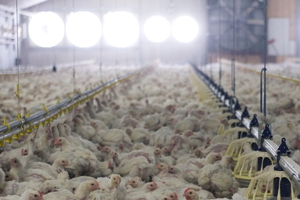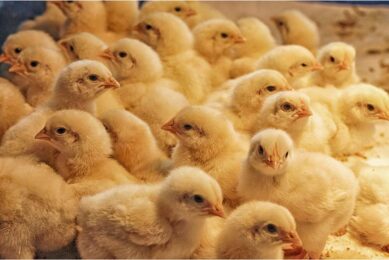Research: Intermittent lighting boosts broiler performance

The benefits of intermittent lighting programmes on broiler welfare and performance have been shown in a Bristol University study conducted in collaboration with David Filmer and a UK broiler integrator.
The study, funded under the SPARK award scheme linking smaller enterprises with research organisations, showed significant gains in bird health and consistently improved productivity.
Bristol University observed commercial broiler-strain chicks reared naturally by broody hens. Compared with chicks raised with a heat-lamp, brooded chicks were more active. A 24-hour study of individually-marked chicks revealed that they rested under the hen during dark periods at night. During the remainder of the day, frequent transitions between active and resting behaviour occurred averaging around 50 transitions per day.
This information was used to design and trial new lighting programmes for broilers on a six house commercial farm. Flockman equipment was used to compare a control lighting treatment having one continuous dark period at night with intermittent lighting providing one long dark period at night and a variable number of shorter dark periods during the day. The trial was replicated over three flock cycles with sequential development of the intermittent lighting treatment.
The study reports states: “The intermittent lighting programmes had beneficial effects on mortality, leg health, reduced culling and overall productivity. Site performance improved over three successive crops from 346 to 347 and finally 350 EPEF. The final crop margin (pence/m2/week) was the highest ever for that farm and for the integrator.”
Previously the best EPEF for the trial site was in the 330s.
Allan Meldrum, director of Food Chain Innovation, said that subsequent work with the new Flockman software on commercial farms elsewhere gave similar increased performance and profit. The software is now widely available assisting customers to mitigate the steep rise in feed costs hitting the poultry industry.
Related website:
Biosciences













